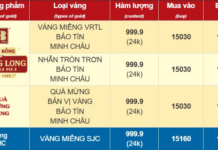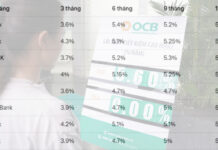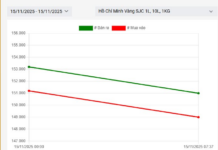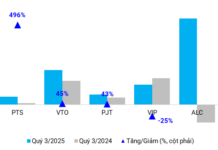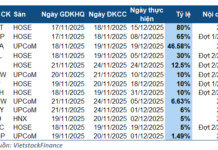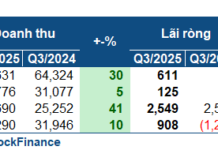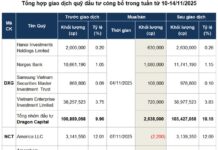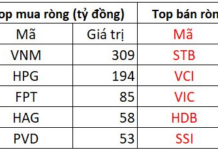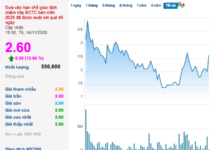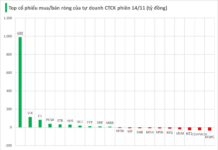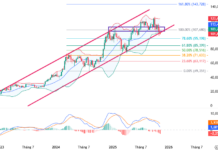At the seminar “Developing the Corporate Bond Market towards 2030: A Credit Rating Perspective” on May 17, VIS Rating experts pointed out trends and four bottlenecks of the current corporate bond market.
Late bond payments decrease to a low level
Mr. Nguyen Dinh Duy – Director and Senior Analyst at VIS Rating’s Rating and Research Division, said that in 2022-2023, the corporate bond market experienced adjustments, leading to a decrease in new issuance compared to the peak in 2021. Among the capital-raising channels of Vietnamese enterprises, stocks, despite receiving much attention, account for a small proportion, with most capital coming from bank credit and corporate bonds, the latter playing a more important role in long-term capital.
Another concern is the initial bond payment delays, a trend that gradually decreased towards the end of 2023 and, in the first four months of 2024, dropped to a very low level. There are two main reasons for this: first, the weakest enterprises have almost been revealed; second, the overall market outlook has improved significantly since the end of 2023 and the beginning of 2024, reflected in improved access to capital and a better business environment.
The total outstanding amount stabilizes as new issuances recover. In 2022 and 2023, the value of new issuances was lower than maturities and buybacks, leading to a decrease in market size. However, this gap is expected to narrow in 2024, helping to stabilize the market.
The value of early buybacks increased in 2022 and 2023 as some enterprises took advantage of the low-interest-rate environment to repay previously issued bonds, while others issued new bonds at lower interest rates to save borrowing costs.

Mr. Nguyen Dinh Duy – Director and Senior Analyst at VIS Rating’s Rating and Research Division, shared at the seminar
|
Mr. Duong Duc Hieu – Director and Senior Analyst at VIS Rating’s Rating and Research Division, believes that there is much room for development in credit ratings in Vietnam, with only 6% of domestically issued corporate bonds being rated, much lower than other countries in the region such as Indonesia at 92%, Thailand at 84%, and Malaysia at 44%.
In Asia, most credit rating organizations have developed very early, with Korea and Malaysia as examples, dating back to the 1980s, which has led to significant market growth. Compared to Asian countries with market sizes typically in the hundreds of billions or trillions of USD, the scale of Vietnam’s corporate bond market is just over 40 billion USD, indicating significant potential, according to Mr. Hieu.
Four bottlenecks in the corporate bond market
According to Mr. Nguyen Dinh Duy, there are four bottlenecks in Vietnam’s corporate bond market that need to be addressed for healthier development.
First, many issuers have low credit quality and limited information disclosure. VIS Rating’s data shows that 20% of the value of outstanding corporate bonds comes from SPEs (shell companies with no core operations but still raising capital) with a late payment ratio of up to 38%, while the remaining 80% have a late payment ratio of only 10%.
Additionally, the purpose of bond issuances in recent years has not aligned with long-term development orientations, with debt restructuring accounting for an increasing proportion, reaching 78% in 2023, while new investments accounted for only 22%. This trend indicates that enterprises are using the bond channel not for the original purpose of financing long-term projects but mainly as a financial channel to maintain their current state, leading to lower-than-expected issuance quality.
Second, there is a lack of clear differentiation regarding the specific risks of different types of bonds. 67% of issued bonds are unsecured, and 33% are secured, with securities collateral accounting for 38%, future projects 32%, and real estate 30%. In terms of late payment recovery rates, secured bonds have the highest recovery rates, with securities-backed bonds at 20%, project-backed bonds at 11%, real estate-backed bonds at 10%, and unsecured bonds at only 8%.
“For bonds with late payments of principal and interest, secured bonds generally have higher recovery rates, but the difference is not significant, still resulting in losses for bondholders. Therefore, asset security is not a decisive factor when investing and does not guarantee all risks of the enterprise”, said Mr. Duy, describing the situation.
Mr. Duy also mentioned a recent trend of enterprises using guarantees from third parties, which does not necessarily improve credit quality. It is necessary to assess the conditions, terms, and payment capacity of the guarantor.
In many issuances, the guarantor is an individual or the parent company, as in the case of Van Thinh Phat, where the guarantee became worthless when the system encountered problems. Or, in some cases, the guarantor’s conditions include ranking the guarantee below their own debt repayment, leading to increased bond risk. Therefore, an independent assessment, such as a credit rating, is necessary to evaluate the terms, conditions, and commitments of the third party.
Third, there is a lack of reference to determine corporate bond pricing and make informed decisions. A typical example from the previous period is the market’s lack of risk differentiation, resulting in some enterprises delaying payments while others remain punctual. Thus, assessing the risks of issuers and their bonds will help enterprises with good credit quality obtain lower interest rates and vice versa.
Usually, the lower the risk, the lower the interest rate, and the higher the risk, the higher the interest rate. However, in reality, some bonds with late payment issues and high risks have unreasonable valuations, with secondary market trading prices even equal to those of bonds issued by enterprises with average to above-average credit quality.






